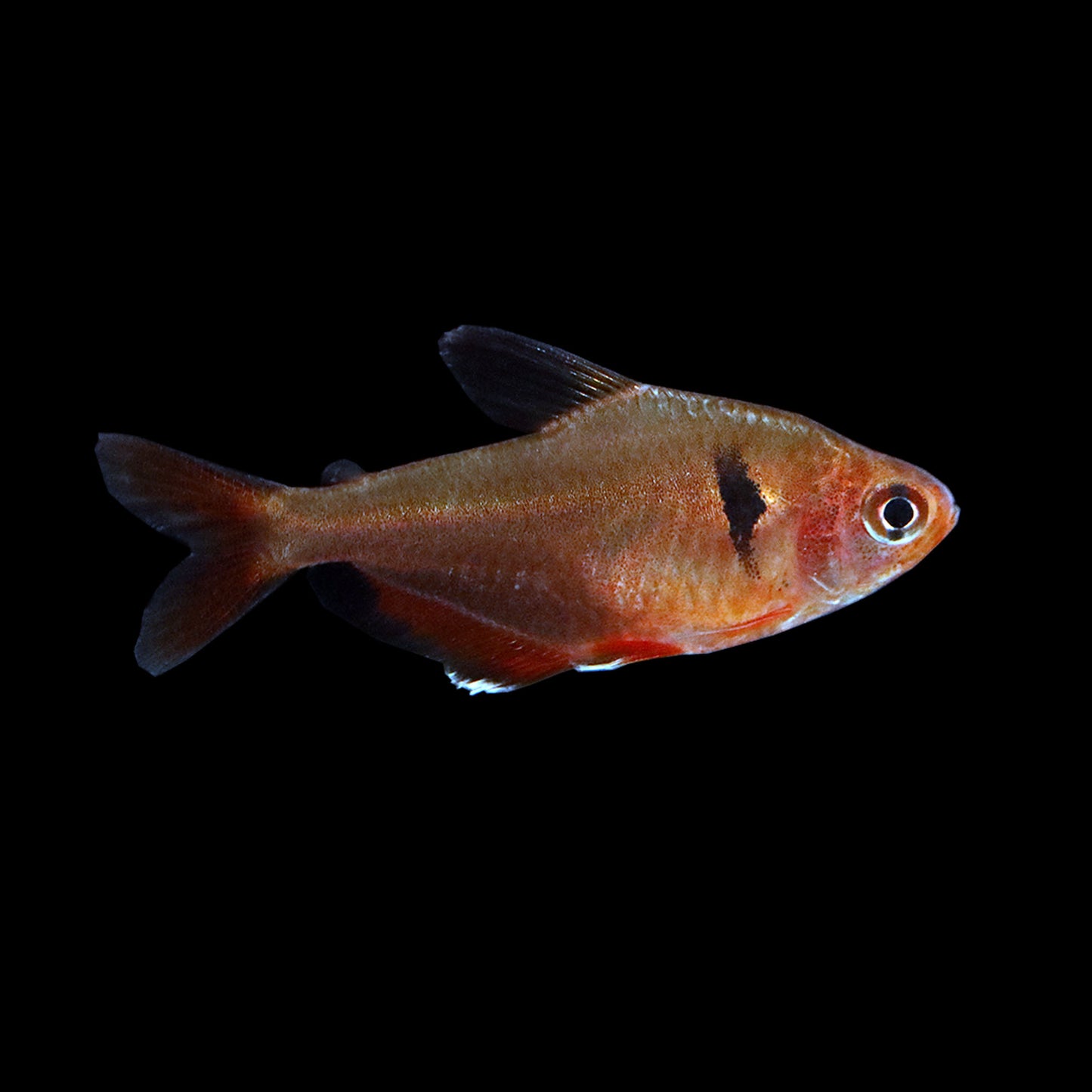AQUARIUM ARTS
Serpae Tetra (Hyphessobrycon eques)
Serpae Tetra (Hyphessobrycon eques)
Couldn't load pickup availability
Description:
The Serpae Tetra is a vibrant freshwater fish known for its deep red body and contrasting black spot behind the gill plate. Its flowing fins, especially the red-tinged dorsal and anal fins, make it a visually striking addition to community tanks. Native to South America, this species is a favorite for its hardiness and schooling behavior.
Size:
Up to 2 inches (5 cm)
Aquarium Size:
A minimum of 20 gallons is recommended for a school of Serpae Tetras, as they are active swimmers and require space for schooling behavior.
Water Parameters:
-
Temperature: 72°F to 80°F (22°C to 27°C)
-
pH: 5.5 to 7.5
-
Hardness: Soft to moderate
Temperament:
Serpae Tetras are semi-aggressive and can be known for fin-nipping, especially when kept in small groups. They are best kept in larger schools, where aggression tends to be diffused.
Group Size:
Best kept in groups of 6 or more. Larger groups help reduce fin-nipping behavior and promote natural schooling dynamics.
Compatibility:
Serpae Tetras can be housed with similarly sized, active fish such as larger tetras, rasboras, danios, and corydoras catfish. Avoid slow-moving, long-finned species like angelfish and bettas, as they may become targets for fin-nipping.
Diet:
Omnivorous. Serpae Tetras thrive on a varied diet of high-quality flakes, micro pellets, and frozen or live foods like brine shrimp, daphnia, and bloodworms. Providing color-enhancing foods can help maintain their rich red coloration.
Care Level:
Beginner to Intermediate. Serpae Tetras are hardy but require a balanced diet and stable water conditions to thrive.
Planted Aquarium:
Serpae Tetras can be kept in planted aquariums. Plants help create natural barriers, reduce stress, and provide a stunning contrast to their red coloration.
Invertebrate Compatibility:
Generally safe with larger invertebrates such as snails. However, small shrimp, particularly shrimp fry, may be vulnerable to predation.
Additional Notes:
Serpae Tetras are best suited for active community tanks where they can school freely. Their bold red coloration becomes most vibrant when kept in a well-planted aquarium with a darker substrate.
Disclaimer:
Aquarium Arts cannot guarantee compatibility with your current fish or the fish you buy and cannot be held liable for fish lost due to aggression.
Share


